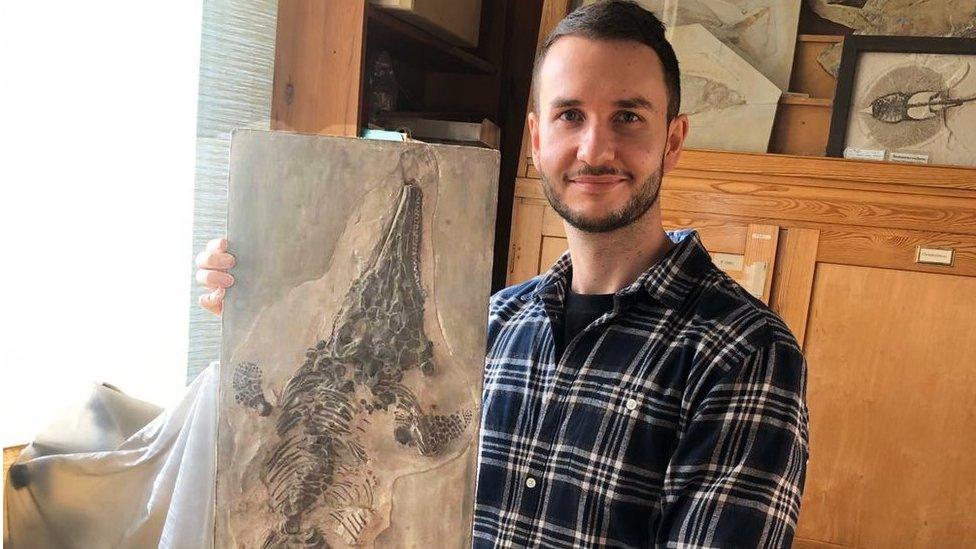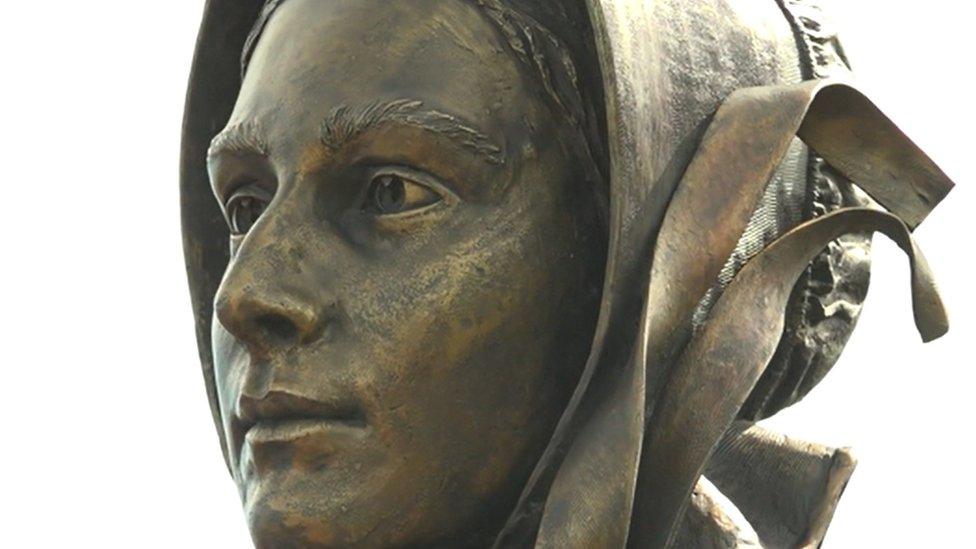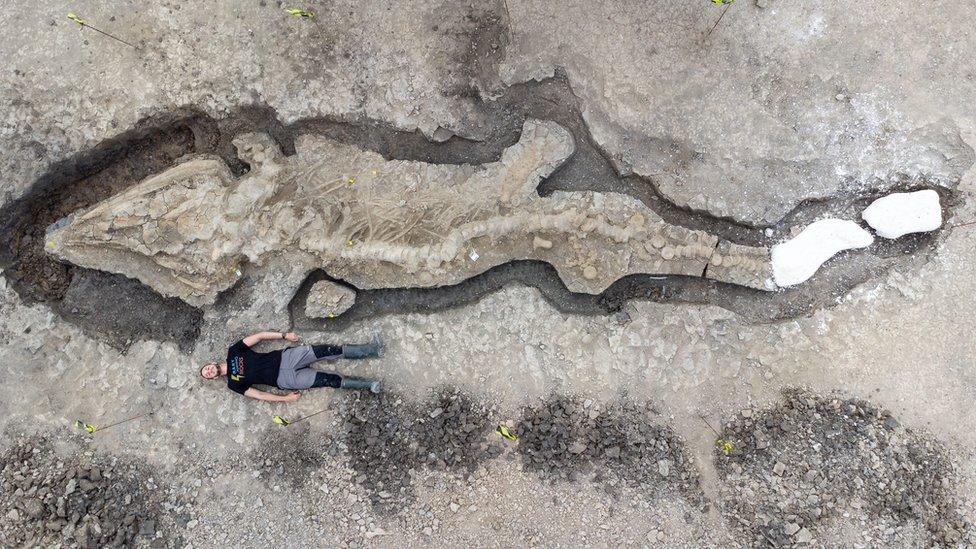Casts of Mary Anning's ichthyosaur found in US and Berlin
- Published

The two casts were the only ones rediscovered after Dr Lomax visited around 60 institutions
Two casts of the first complete ichthyosaur fossil, destroyed during World War Two, have resurfaced in the US and Germany.
The original fossil was discovered in Lyme Regis by Dorset palaeontologist Mary Anning, external around 1818 and sold to the Royal College of Surgeons in London.
Dr Dean Lomax found the casts in Connecticut and Berlin.
It is hoped their discovery may lead to more specimens being unearthed.
When the ancient marine reptile was first brought to the attention of the scientific world "nobody could quite work out what it was, it looked a little bit like an alligator or a crocodile, maybe a fish," Dr Lomax said.
But studies of the prehistoric creature were cut short after it was destroyed during the London Blitz in 1941.
The only record of Anning's discovery was a drawing of the reptile, originally called a Proteosaurus, by William Clift.

The original drawing by William Clift courtesy of the Royal Society, and the two recently discovered casts
However, 75 years later in 2016 Dr Lomax and a colleague were conducting research in the Yale Peabody Museum in Connecticut.
"So, so excited"
"I pulled out the ladder, reached up high and hauled out this block, this big wooden frame about a metre long and staring at me was this ichthyosaur. Quickly took a few measurements, took some photos.
"Once I returned back to the UK then it struck me, this is a cast of the original specimen. At this point I got so, so excited, this is the first known cast of the original skeleton," Dr Lomax said.
In 2019 a similar situation unfolded at the Natural History Museum in Berlin, "another perfect cast of this ichthyosaur."
"I thought it's time we write this up, we have two casts now. We need to share it with fellow scientists and public alike," he added
According to London's Natural History Museum the Peabody cast is believed to be the older of the pair and is less detailed and more worn than the one in Berlin.
While both differ from the original illustration, the Berlin specimen is thought to have benefitted from more advanced casting techniques that preserve the original fossil in better detail.

Follow BBC South on Facebook, external, Twitter, external, or Instagram, external. Send your story ideas to south.newsonline@bbc.co.uk, external.
- Published21 May 2022

- Published10 January 2022
